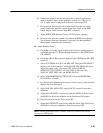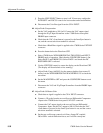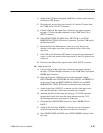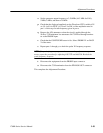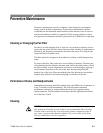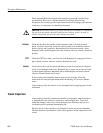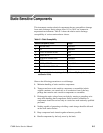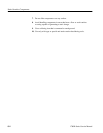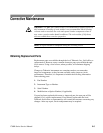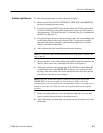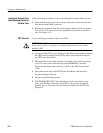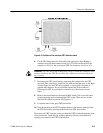
Preventive Maintenance
6–2
1780R-Series Service Manual
The instrument should be cleaned often enough to prevent dust and dirt from
accumulating. Dirt acts as a thermal insulator, preventing effective heat
dissipation, and can also provide high-resistance electrical leakage paths between
conductors or components in a humid environment.
CAUTION. Do not allow water to get inside any enclosed assembly or component.
Do not clean any plastic materials with benzene, toluene, xylene, acetone, or
similar compounds, because they may damage the plastic.
Clean the dust from the outside of the instrument with a soft cloth or small
brush. A brush is especially useful for removing dust from around the selector
buttons, knobs, and connectors. Hardened dirt may be removed using a cloth
dampened with a mild detergent and water solution. Abrasive cleaners should not
be used.
Clean the CRT faces with a soft, lint-free cloth dampened in isopropyl alcohol or
glass cleaner solution. Abrasive cleaners should not be used.
Loosen dust with a soft, dry brush and remove it with low-pressure air (high-ve-
locity air can damage some parts). Hardened dirt or grease can be removed with
a cotton-tipped applicator dampened with a mild detergent and water solution.
Abrasive cleaners should not be used.
If the circuit board assemblies must be removed for cleaning, follow the
instructions for removal/replacement under the heading of Corrective Mainte-
nance.
After cleaning, allow the interior to dry thoroughly before applying power to the
instrument.
Visual Inspection
After cleaning, check the instrument carefully for improperly seated transistors
or integrated circuits, defective connections, and damaged parts. To prevent
additional damage, in the case of heat-damaged parts, determine the cause of
overheating before replacing the damaged part.
Periodic checks of the transistors and integrated circuits are not recommended.
The best measure of performance is the actual operation of the component in the
circuit.
Exterior
CRT
Interior



